Are you behind on SEO trends? You’re not alone. By 2025, voice searches will make up 20% of all online queries. This post has 100 SEO stats to shape your strategy for the next few years.
Highlights
- Voice searches will make up 20% of all online queries by 2025 so you need to optimise for voice.
- Mobile SEO is still key, 55% of global website traffic comes from mobile and 59.77% of search engine market share from smartphones.
- AI tools like ChatGPT and Google Bard are changing SEO, 58% of marketers will use AI for content and SEO this year.
- Videos appear in 62% of global Google searches so video SEO is a must for ranking and engagement.
- Local SEO is important, 58% of consumers use voice search to find local business info and 28% of users contact a business after a voice search.
Table of Contents
Download Our Free SEO Guide Here!
Overview of SEO Statistics in 2025
SEO stats 2025 will blow your mind. They’ll show you how search has changed and what matters most for websites.
SEO Metrics
SEO metrics are the gauge for online success. They show how your site performs in search. Key stats like organic traffic and clickthrough rates tell the story. For example a high CTR means your content is grabbing attention.
A low bounce rate means visitors find what they were looking for on your site.
These numbers help you make smart decisions for your site. They show you what’s working and what needs to be fixed. 57% of users avoid poorly mobile optimised sites so mobile metrics matter big time.
Tracking keyword rankings lets you see how you compare to your competitors. Domain Authority scored from 1 to 100 gives you a quick snapshot of your site. By keeping an eye on these numbers you can increase your online visibility and get more visitors.
SEO Trends
SEO trends change fast. In 2025 we’ll see big changes in how we do SEO. Voice search is growing fast. 40% of adults use it daily. So we need to change how we write content.
We need to make it sound more conversational. Videos are huge now. They show up in 62% of Google searches worldwide. So good video content is key for SEO success.
Mobile SEO is still important. 20% of marketing emails aren’t mobile friendly yet. Big mistake. More people are searching online on their phones every day. Local SEO is getting bigger too.
58% of people use voice search to find local businesses and 28% of them call the business after. So local SEO is super important for small business. To stay ahead we need to keep up with these new trends.

SEO Metrics to Track in 2025
SEO metrics are changing fast. In 2025 you’ll need to track new numbers to stay ahead.
Search Engine Rankings
Search engine rankings are still important for online visibility, showing where your site sits on Google’s results pages. A high ranking means more clicks and visitors. In 2025 these will still be important but changing.
AI and voice search will bring new variables. Sites that adapt to these changes will win.
Getting to the top takes effort and strategy. It requires high quality content and a fast mobile friendly site. Backlinks from authority sites also help with rankings.
Monitoring your competitors is key as they are always trying to move up the ranks. 27.7% of mobile users click on the first search result that’s a big chunk of traffic.
Keyword
Keyword performance is a big part of SEO success. It shows how well your chosen keywords are ranking in search results. Good keywords bring more traffic to your site.
Tools like Google Analytics will show you how your keywords are performing over time so you can adjust your strategy for better results.
SEO pros know not all keywords are created equal. In fact 92% of keywords get less than 10 searches a month.
Mix in popular terms with niche ones to cover your bases. Keep an eye on trends and update your keyword list often.
Backlink Quality
Backlink quality is still a big factor in SEO success. Good links from authority sites will boost your rankings. But not all links are created equal. Quality always trumps quantity. A few strong links from good domains will pack more power than hundreds of weak ones.
Google can spot fake or spammy links so focus on earning real valuable ones.
I’ve seen how great backlinks can transform a site’s performance. One client got a link from a major news outlet and their traffic doubled overnight. It’s not just about getting any link though.
The best backlinks come from sites in your niche, with high domain authority. They should use natural anchor text and point to relevant pages on your site. Building a solid backlink profile takes time and effort but the payoff is worth it.
User Engagement Metrics
User engagement metrics show how people are interacting with your site. These numbers will tell you if visitors like your content. Key metrics are time on page, pages per visit and bounce rate.
So improving engagement will help your SEO. Monitor your click through rate too. It shows how often people are clicking on your links in search results.
One third of email clicks come from mobile devices. That’s a big stat for mobile friendly sites.
AI’s Impact on SEO
AI is changing SEO in big ways. It’s making search smarter and helping websites rank better. Want to know how AI tools like ChatGPT are shaking things up? Keep reading!
AI Integration in SEO Strategies
AI has changed the game in SEO. It’s making data crunching a breeze for marketers. In fact, 58% of them plan to use AI for content and SEO this year. That’s a big jump! I’ve seen firsthand how AI tools can spot trends and tweak strategies faster than ever before.
They’re like having a super-smart assistant who never sleeps.
But it’s not just about number-crunching. AI is helping create smarter content too. It can suggest topics, optimize keywords, and even draft articles. This frees up time for the creative stuff that humans do best.
As someone who’s used these tools, I can say they’re a real game-changer. They help us work smarter, not harder, in the fast-paced world of digital marketing.
Role of AI Tools like ChatGPT and Google Bard
AI tools like ChatGPT and Google Bard are changing the SEO game. ChatGPT helps create content and find keywords faster. Google Bard spots gaps in your content and helps plan better.
These tools make SEO work easier and more effective. They save time and boost results.
Marketers are catching on to AI’s power in SEO. A big chunk of them, 40%, say AI has bumped up their revenue by 6-10%. More than half, 58%, plan to use AI in their SEO work this year.
This shows AI isn’t just a fad – it’s becoming a must-have for smart SEO pros.
Predictive Analytics in SEO
Predictive analytics in SEO helps businesses stay ahead of the curve. Tools like ChatGPT and Google Bard crunch data to forecast trends. These smart helpers spot patterns in search behavior before they become obvious.
SEO pros use these insights to tweak their plans on the fly.
This tech isn’t just about guessing. It’s about making smart choices based on solid data. With predictive analytics, companies can see what content might blow up next. They can also figure out which keywords will matter most in the coming months.
This gives them a leg up on the competition.

Mobile SEO: A Continuing Dominance
Mobile SEO keeps growing fast. More folks use phones to search, so websites must work well on small screens.
Mobile Search Statistics
Mobile search dominates the digital landscape. Let’s look at some eye-opening stats:
| Mobile Search Statistic | Value |
| Global website traffic from mobile devices | 55% |
| Search engine market share from smartphones | 59.77% |
| Mobile users preferring quick-response sites | 69% |
| Smartphone users undecided about brand purchases | 90% |
These numbers paint a clear picture. Most people use phones to browse the web. Smartphones rule search engine use. Speed matters a lot to mobile users. And most phone users haven’t made up their minds about what to buy. This data shows why mobile SEO is crucial. It affects how people find and choose products. Businesses must focus on mobile-friendly sites to stay competitive. Fast loading times and easy navigation on small screens are key. Local SEO also plays a big role in mobile searches. People often look for nearby services on their phones. Voice search is growing too, changing how we optimize for mobile. As a marketer, I’ve seen firsthand how mobile-optimized sites boost traffic and sales. It’s not just about being mobile-friendly anymore. It’s about putting mobile first in all SEO strategies.
Optimization Strategies for Mobile
Mobile optimization is crucial for SEO success in 2025. Smart businesses focus on these key strategies to boost their mobile presence:
- Responsive design: Create a layout that adapts to all screen sizes. This ensures a smooth user experience across phones, tablets, and desktops.
- Thumb-friendly navigation: Place important buttons within easy reach of thumbs.
- Simplified content: Break text into short paragraphs and use bullet points. Mobile users prefer quick, easy-to-scan information.
- Local SEO focus: Optimize for “near me” searches and include location-specific keywords. This taps into the 80% of local searches that lead to purchases.
- Voice search optimization: Use natural language in your content. This helps capture the growing number of voice-based queries.
- Mobile-first indexing: Build your site with mobile as the primary platform. Google now uses the mobile version of your site for ranking.
- AMP implementation: Use Accelerated Mobile Pages for lightning-fast load times. This can boost your visibility in mobile search results.
- Clear calls-to-action: Make buttons and links easy to tap on small screens. This improves conversion rates for mobile users.
- Regular mobile testing: Use tools like Google’s Mobile-Friendly Test to check your site often. This helps catch and fix mobile issues quickly.
Voice Search: Growth and Adaptation
More people are talking to their phones and smart speakers to get answers and info.
Voice Search is Growing
Voice search is on fire. 39.4% of U.S. internet users talk to voice assistants monthly. This is changing how we find info online.
Local businesses should pay attention. So you need to optimize for voice search. Short, clear answers to common questions will get your business in voice search results.
Optimizing for Voice Search Queries
Voice search has changed how we find info online. Let’s get your content voice-search ready.
- Write in natural language: People speak differently than they type. Write content that mirrors how folks talk. For example, instead of “best pizza NYC,” use “What’s the best pizza place in New York City?”
- Focus on questions: Voice searches often come as questions. Add FAQs to your site and use question-based headers. This will match user queries and increase your chances of getting featured snippets.
- Go for featured snippets: These short answers at the top of search results are gold for voice search. In fact, 40.7% of voice search answers come from featured snippets. Create clear, concise answers to common questions in your industry.
- Faster pages rank better and are more likely to be read aloud. Compress images, use browser caching and minimize code to speed up your site.
- Use structured data: This helps search engines understand your content better. It can lead to rich results in search engine results pages (SERPs) and increase your chances of being chosen for voice answers.
- Create long-form content: The average Google voice search result page has 2,312 words. Longer content gives you more chances to answer various questions related to your topic.
- Build a strong backlink profile: High-quality backlinks will boost your site’s authority. This will improve your rankings for both text and voice search.
- Make your site mobile-friendly: Most voice searches happen on mobile devices.
- Use conversational keywords: Think about how people might ask about your products or services out loud. Add those phrases to your content to match voice queries better.

Video Content and SEO
Videos are dominating search results. Savvy SEOs are using this to their advantage.
Video in Search Results
Videos have taken over search results. Google shows them in 62% of global searches. This big shift means businesses need to up their video game. Smart marketers are already on it.
Almost half say videos increase their income. It’s clear why: videos grab attention and keep people on your site longer.
Landing pages with videos have a better chance of ranking high on Google. That alone should make you want to add videos to your pages. But there’s more. Videos explain complex ideas fast.
They also build trust with viewers. In today’s fast-paced world, videos are the best way to share info and connect with customers.
Video SEO Strategies
Video SEO is key to online success. Here are the strategies to boost your video’s search engine ranking:
- Optimize video titles and descriptions
- Use keywords in title
- Write detailed, keyworded descriptions
- Create thumbnails
- Design custom thumbnails that grab attention
- High-contrast images and text
- Thumbnails look good on mobile
- Add closed captions and transcripts
- Accurate, time-synced captions
- Full transcripts for longer videos
- For accessibility and keyword indexing
- Use schema markup
- Video schema to give extra info to search engines
- Video duration, upload date, thumbnail URL
- Video length
- 2-4 minutes for best engagement
- 10+ minutes for in-depth topics
- Under 1 minute for social media
- Video load time
- Compress video files without losing quality
- Fast, reliable video hosting platform
- Lazy loading for multiple videos on a page
- Video sitemaps
- Submit video sitemap to Google Search Console
- Video URLs, titles, descriptions, etc.
- Engage
- Ask viewers to like, comment, share
- Respond to comments to increase interaction
- Create playlists to increase watch time
- Optimize for YouTube search
- Use YouTube’s autocomplete for keyword ideas
- Add tags to your videos
- Create video cards and end screens
- Track video performance
- View counts, watch time, engagement rates
- Use Google Analytics to track traffic from videos
- Adjust your strategy based on performance data
Local SEO Stats
Local searches drive foot traffic to businesses. Savvy owners are using local SEO to get those customers.
Local Searches
Local searches are big in today’s digital world. People use their phones to find nearby businesses all the time. In fact, 30% of mobile searches are location based. That means people are searching for shops, restaurants and services near them.
Business owners know this and make sure they appear in local search results.
Voice search is changing the game too. 58% of consumers use voice to find local business info. 51% use it to find restaurants. These numbers show how important it is to optimize for local and voice search.
If they don’t, they might miss out on a ton of potential customers. After all, 28% of users contact a business after a voice search. That’s a lot of sales waiting to happen.
Local SEO Techniques
Local SEO can make or break a business in today’s digital world. Here are the top techniques to boost your local search presence:
- Claim and optimize your Google Business Profile. Fill out all fields, add photos and keep your info up-to-date.
- Get more reviews. Ask happy customers to review you on Google, Yelp etc.
- Create local content. Write about local events, news and topics that matter to your community.
- Use local keywords. Include your city and neighborhood in your website content and meta tags.
- Build local backlinks. Partner with other local businesses and organizations for link exchanges.
- Ensure NAP consistency. Your name, address and phone number should be the same across all online listings.
- Add schema markup. This code helps search engines understand your business better.
- Optimize for voice search. 58% of people use voice search to find local business info.
- Focus on mobile. 30% of mobile searches happen before visiting a store.
- Use local social media. Engage with your community on Facebook and Instagram.
- Create location specific pages. If you have multiple locations, create a unique page for each one.
- Encourage check-ins. Ask customers to check in on social media when they visit your store.
- Use Google Maps marketing. Add your business to Google Maps and optimize your listing.
- Host local events. This will boost your local presence both online and offline.
- Get listed in local directories. Submit your business to relevant local online directories.
E-commerce and SEO
E-commerce sites need great SEO to stand out. Good SEO drives online sales and helps customers find products faster.
E-commerce SEO Tactics
E-commerce sites need strong SEO to stand out. Here are the key tactics to boost your online store’s search rankings:
- Mobile optimization: 80% of top sites are mobile friendly. Make sure your site loads fast and looks good on phones.
- Product descriptions: Write unique and detailed descriptions for each product. Use keywords naturally in the text.
- User reviews: Ask customers to review. Fresh content helps SEO and builds trust with customers.
- Site structure: Create a clear and logical layout. Use categories and subcategories to help users and search engines navigate your site.
- Image optimization: Add alt text to product images. This helps search engines understand your content and accessibility.
- Schema markup: Use this code to give search engines more info about your products, prices and availability.
- Page speed: A fast site keeps users happy and ranks better. Compress images and minimize code to speed up load times.
- Content marketing: Create helpful blog posts, buying guides and how-to articles. This brings in traffic and builds authority.
- Internal linking: Connect related products and pages. This helps users to explore your site and spread link equity.
- Secure site: Use HTTPS to protect user data.
How SEO Affects Online Shopping Behaviour
SEO influences how people shop online. Good SEO helps stores show up when customers search. This means more visits and sales. A stat shows 51% of mobile users find new brands through search.
This means SEO can introduce customers to products they never knew existed.
Smart SEO also improves the shopping experience. It helps stores know what customers want. They can then offer better products and information. 43% of users search on phones while in store.
Good mobile SEO allows shops to give customers information at the right moment. This means more in-store and online sales.

Technical SEO Updates
Technical SEO changes fast. Google’s latest updates and speed changes matter a lot for websites.
Latest Algorithm Changes
Google is constantly tweaking its search rules. These changes are to give users better results. In 2025 we see more focus on user intent and content quality. Latest updates reward sites that offer real value to visitors.
They also penalize those trying to manipulate the system with cheap tricks.
Mobile-first indexing is now the standard. This means Google looks at your mobile site first when ranking pages. Speed matters more than ever. Sites that load fast on phones get a big bonus.
Voice search optimization is also important. As more people use smart speakers, Google favors content that answers questions clearly and concisely.
Site Speed and Security Updates
Site speed and security are top of mind for websites in 2025. Let’s take a look at the key updates that boost both speed and security:
- Fast pages: 69% of mobile users prefer fast responding sites. To meet this, compress images, use browser caching and minimise code.
- HTTPS everywhere: 70.4% of voice search results are from HTTP sites. Switching to HTTPS boosts trust and may help rankings.
- Core Web Vitals: Focus on Largest Contentful Paint, First Input Delay and Cumulative Layout Shift. These metrics affect user experience and Google rankings.
- Mobile-first indexing: As mobile internet use grows, make sure your site loads fast on phones. Use responsive design and AMP pages.
- CDN implementation: Content Delivery Networks speed up page loads by serving files from servers near users.
- SSL certificates: These encrypt data between servers and browsers, keep user info safe from hackers.
- Regular security audits: Check for vulnerabilities often. Fix issues quickly to protect your site and users.
- Two-factor authentication: Add an extra layer of security for admin logins to prevent unauthorized access.
- Automated backups: Backups protect your data in case of breaches or technical issues.
- Web application firewalls: These tools block malicious traffic before it reaches your server, improve security.
SEO in 2025 and Beyond
SEO will change a lot by 2025. We need to keep up with new tech and user habits to stay ahead.
Changes with AI and Automation
AI and automation is changing SEO fast. By 2025 we’ll see big changes in search marketing. Smart tools will help us spot trends and create better content. They’ll also help us know what users want before they search.
So we can be prepared with the right info at the right time.
We need to stay agile as these changes roll out. Learning to work with AI tools like Google Bard will be crucial. These helpers can find gaps in our content and plan new topics. 58% of marketers are planning to use AI for SEO this year.
We should start using these tools now.
Following User Behaviour and Expectations
Users change fast and SEO must keep up. People want quick answers and smooth experiences. 69% of mobile users prefer sites that respond fast. So SEO pros need to focus on speed and usability.
They need to make sites load fast and work on all devices.
Voice search is growing too. 39.4% of US internet users use voice assistants monthly. SEOs should optimise for voice queries. They need to use natural language and answer common questions.
As user habits shift, SEO strategies must evolve to meet new needs and wants.
Conclusion
SEO will keep changing fast in 2025. Smart marketers will need to stay on top of new trends. Voice search, mobile use, and AI will shape how we do SEO. Video content will grow more important too.
To win at SEO, we’ll need to adapt quickly and use data wisely. The future of search looks exciting, and those who prepare now will lead the pack.

Frequently Asked Questions
-
How will link building change by 2025?Link building's gonna be a whole new ballgame. With tech advances, we'll see more focus on quality over quantity. Reciprocal links? Out the window. Instead, think creative backlinking strategies that'll make Google sit up and take notice.
-
What's the deal with meta descriptions in 2025?Meta descriptions are still kicking, folks! They're key for boosting those click-through rates. By 2025, we'll see AI helping craft snappy, engaging blurbs that'll make users click faster than you can say "SEO optimization."
-
How will voice search impact SEO in 2025?Voice search is gonna be huge! With Amazon Echo, Alexa, and Google Home getting smarter, SEOs need to prep for a world where people talk to their gadgets. It's all about natural language and long-tail keywords now, baby!
-
What role will AI play in SEO by 2025?AI's gonna be the MVP of SEO. From keyword research to content creation, it'll be everywhere. But don't worry, human SEO pros aren't going extinct. We'll need that human touch to keep things real and relevant.
-
How will zero-click searches affect SEO strategies?Zero-click searches are shaking things up! By 2025, we'll need to get creative to grab attention on that search engine results page. It's not just about ranking anymore - it's about standing out in a sea of instant answers.
-
What's the future of mobile SEO looking like?Mobile's not the future anymore - it's the now! By 2025, if your website isn't mobile-friendly, you might as well be invisible. Speed, responsiveness, and user experience on small screens will make or break your SEO game.

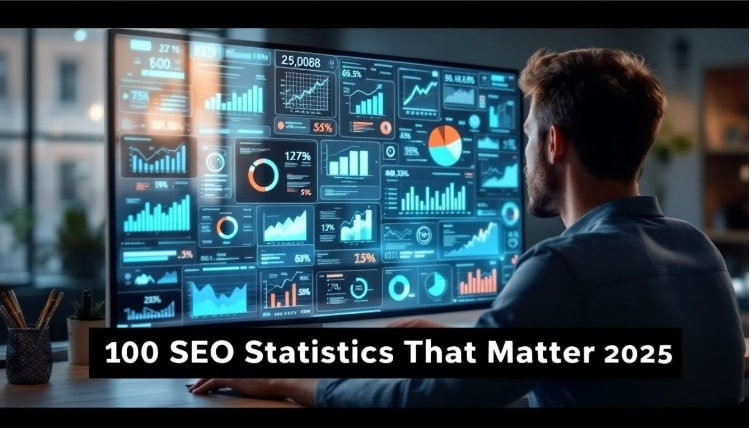


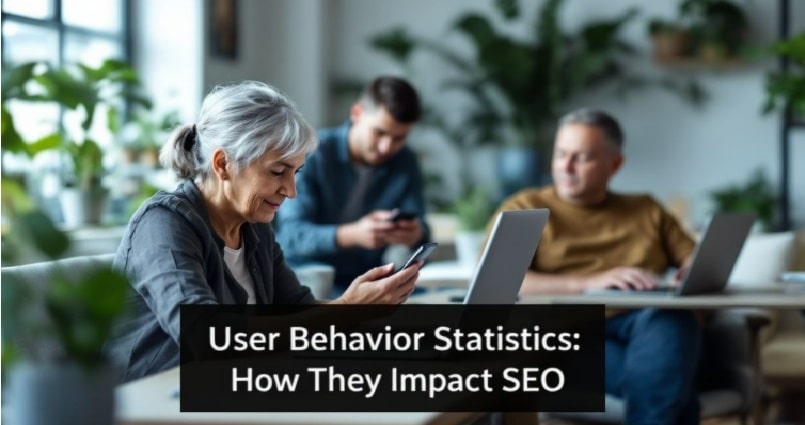
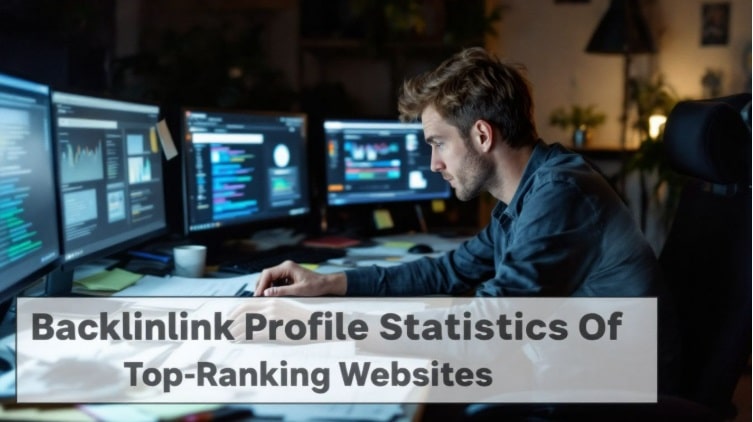





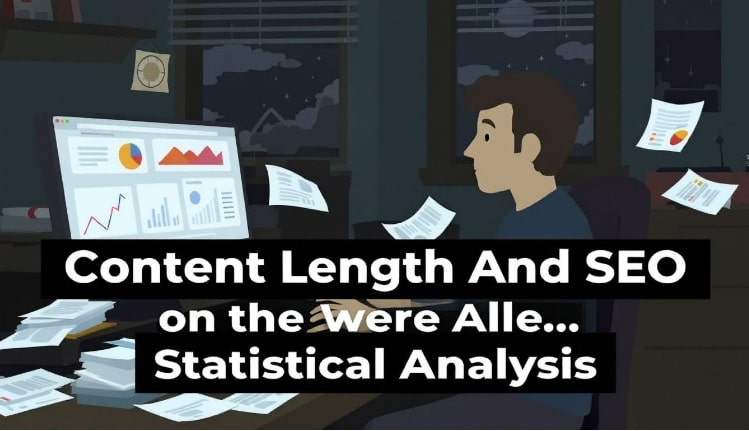

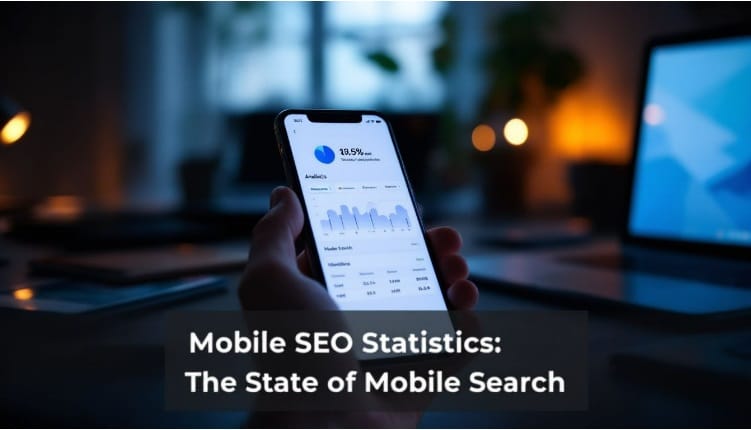



0 Comments